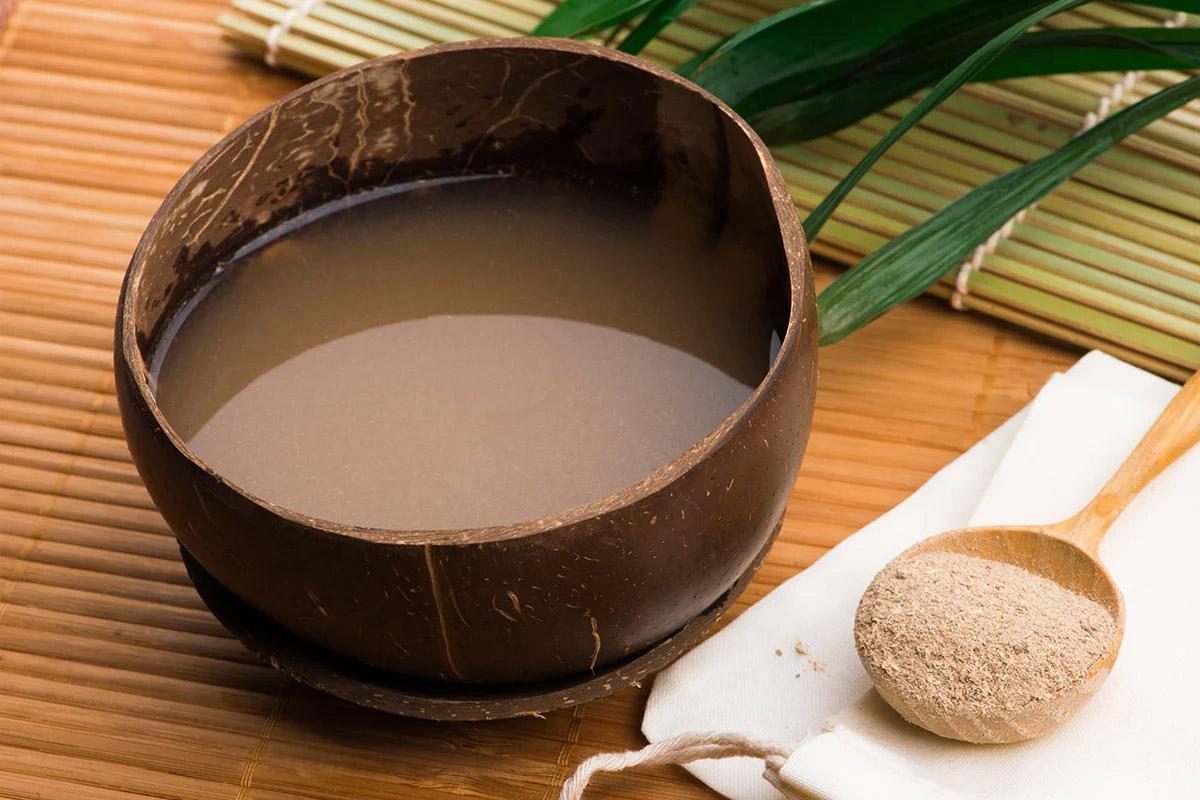Once you become more familiar with Kratom and start using it regularly, you might begin to wonder about which other herbs can help boost your well-being by positively affecting your body, mind, and life. When you start on an entirely new track, it can be exciting to feel the slow changes within you.
Despite this, you mustn’t rush head-on into this mode, where you incorporate too many new products and develop new habits as part of your regular wellness routine.
It would be best to consider the broader impacts of these substances, understanding the benefits and reactions of all the components before making any significant changes. When you combine certain substances, you also need to consider their potential interactions. The products must not counteract each other as that can cause problems in your system.
What Is Kratom?
Kratom (botanical name- Mitragyna speciosa,) is an indigenous evergreen tree that grows abundantly in Southeast Asia’s tropical regions. This tree is part of the Coffea (coffee plant) family. Kratom has been used in various traditional medicines in these regions for centuries, and it is a staple of life for local inhabitants.
What Is Kava?
Kava or Kava-Kava (botanical name -Piper Methysticum) is a native plant of the Western Pacific. It is also grown in the Samoas, Tonga, Hawaii, and Fiji. While it is possible to grow the plant in the US, it needs a warm, humid, and sunlit environment to thrive. In its native land, people use Kava for traditional ceremonies and many other purposes.
Kratom and Kava- The Similarities
When someone is a novice in the plants and herb world, it isn’t difficult to get confused and make mistakes. This is precisely what happens with Kava and Kratom because people commonly confuse the two. If you give these two a cursory glance, it isn’t difficult to see why this is the case. There are many similarities between the two, such as:
- In their natural environment, these plants have a very similar physical appearance, and their powder forms look identical too
- Traditionally, both Kratom and Kava are consumed in teas.
- They both can potentially provide the body significant benefits.
- Many people have conducted a substantial amount of research on Kava and its effects, and several studies substantiate the claims. Like Kratom, Kava can potentially induce feelings of positivity, lightness, well-being, peace, and motivation.
Kratom and Kava- The Differences
Despite the many similarities between these two plants and their effects, there are also several notable differences such as:
- They come from very different botanical families- Kratom belongs to the Rubiaceae (coffee) family, while Kava belongs to the Piperaceae (pepper) family.
- Compared to Kava, Kratom is far more nuanced. The latter’s dosage determines the benefits an individual experiences from consuming Kratom, and lower dosages having different influences than higher ones. However, you must stick to the recommended Kratom serving size, which is 2.4g. It’s also crucial that you do not take more than two servings in a 24-hour duration. You need to follow this no matter which strain you choose to use, ranging from Green Malay Kratom to Red Maeng Da Kratom to Green Malay Kratom.
- In comparison, Kava produces a sense of calmness regardless of dosage, and its influence is uniform. However, you still need to take Kava responsibly, in the correct, safe dosage.
- The other difference between these two lies in the plant parts used. While Kratom and Kava are prepared similarly, the latter’s roots and Kratom’s leaves are used in herbal preparations. This fact may not seem to be of consequence to Kratom and Kava novices. However, the distinction matters quite a lot in the botanical space because the components and properties of each plant differ. These plants have very distinctively different pharmacological compositions. Mitragynine and 7-hydroxymitragynine are the two main alkaloids that make Kratom so effective. Kava has kavalactones, and its pharmacological composition is entirely different as well. The chemical composition of these two plants has no commonality.
The Legality Aspect
Legality is an extension of the differences between these two plants. It is illegal to buy, possess, use or sell Kratom in Alabama, Indiana, Rhode Island, Arkansas, Wisconsin, and Vermont. In other smaller parts of the US, additional restrictions exist. Some countries have set an age restriction on Kratom while others have banned it entirely, making it essential that you check all your local, Kratom-related rules and regulations. It’s a crucial step to take before you use Kratom.
This is where Kava is different. Because it isn’t an illegal substance, there are no questions about its safety, which is why there are no restrictions to buying, selling, possessing and using it. However, things were different up until a few years ago. Some research surfaced showing that Kava harmed the liver, giving rise to doubts about its safety.
Switzerland and Germany then banned the product, forcing people to question whether herbs could ever be sustainable in human use. Later, it was discovered that consuming alcohol with Kava was the main culprit in causing liver problems, and the research was ultimately refuted. Kava is a legal substance and has been readily available for more than 20 years for public use. Many people have discovered its benefits for them, and Kava has grown significantly in popularity over the years.
Can I consume Kava and Kratom At the Same time?
Many people ask this question, and it is a relevant one. While Kava and Kratom’s benefits may be similar, you still need to exercise caution and never mix these two in a single dose. You can, however, use it alternatively or intersperse them at the intervals you prefer in your weekly or daily routine. Kratom and Kava have potent components that can overwhelm your system if you vape or smoke them.
The Best Way To Enjoy Kava
Traditionally, many people consume Kava in tea form. Some stress-relief herbal teas also contain Kava, and you can also find ready Kava tea bags in the market. If you want to experience all the benefits of this remarkable substance, you must always take it on an empty stomach.
Food can affect your experience, so it’s best not to take it after a big meal. It’s also okay to take Kava on a relatively empty stomach as well, and it will help your system use the substance efficiently. Plan the dosage correctly and drink your Kava tea about 3-4 hours after a meal.
It’s also crucial that you do not compromise on quality- buy premium quality Kava tea. If you prefer not to purchase it in teabag form, you can purchase loose Kava root. Conduct some research on which suppliers you can source Kava from. It’s best to opt for freshly ground Kava root, made from the plant’s lateral roots, as these have the most potent kavalactones.
Traditional Kava Tea Recipe
Things you will need:
- High-quality ground lateral Kava root
- Hot or warm water
- Scale
- A mixing bowl
- A strainer bag
- Mugs
Steps:
- Use a scale or any other suitable measuring equipment to measure out the correct quantity of Kava.
- Read the instructions that come with the product and follow them correctly. It’s never a good idea to take more than the stated amount.
- Place the root in the strainer and pour the hot/warm water over it. The water should be warm enough so you can dip your finger into it without being scalded but hot enough for the root to infuse well for five minutes
- Agitate the Kava for 10 minutes by gently squeezing and pressing the root in the water floating in the strainer
- Get as much of the Kava root into the water as possible
- Lift the filter and pour your traditional Kava tea into your mug.
Simple Modern Kava Tea Recipe
If you are new to Kava and want to ease your way into the experience of making Kava tea, here is a simple modern recipe:
Things you will need:
- Kava root
- Boiling water
- A glass jar
- A strainer
- Milk (optional)
- A sweetener you prefer
- A mug
Steps:
- Take the recommended amount of Kava root
- Place the root in a glass jar that is large enough to contain the amount of liquid you plan to use.
- Pot boiling water over the root, making sure it is covered completely
- There should be enough water for you to make a cup of tea for yourself.
- Set some aside with the lid on the glass jar to steep overnight.
- The next day, take the jar and strain the infused Kava tea into your mug or cup.
- You can add some milk, honey, or sugar to soften its taste.
The Best Way to Enjoy Kratom
You can consume Kratom tea in a way similar to Kava:
Things you will need:
- High-quality Kratom powder
- Sweetener of choice – stevia or honey
- Lemon juice
- Strainer
Steps:
- Take some lemon juice in a bowl, and soak the Kratom powder in it
- Add a splash of water and let it steep for about 15 minutes
- Heat water in a suitably sized pot
- Let the water reach a gentle simmer (The water mustn’t exceed this temperature if you want the Kratom to infuse in optimal conditions)
- Add the lemon juice and Kratom mixture slowly to the simmering water
- Allow it to infuse for approximately 10-15 minutes and not more than that
- Once the tea turns bright yellow, your tea is ready
- Pour the liquid through a strainer to separate the powder from it. You can use this powder a second time.
- Pour the infused tea into a suitable mug or cup
- If you notice some lumps, stir the tea a bit
- Add a sweetener of choice and enjoy your refreshing Kratom tea.
In Closing
Both Kratom and Kava have many benefits and are an excellent way to boost your overall well-being. However, as mentioned earlier, never mix these two plants in a single dose. If you want a well-balanced wellness journey, consume Kratom and Kava at different times of the day and find a routine that works best for you.





